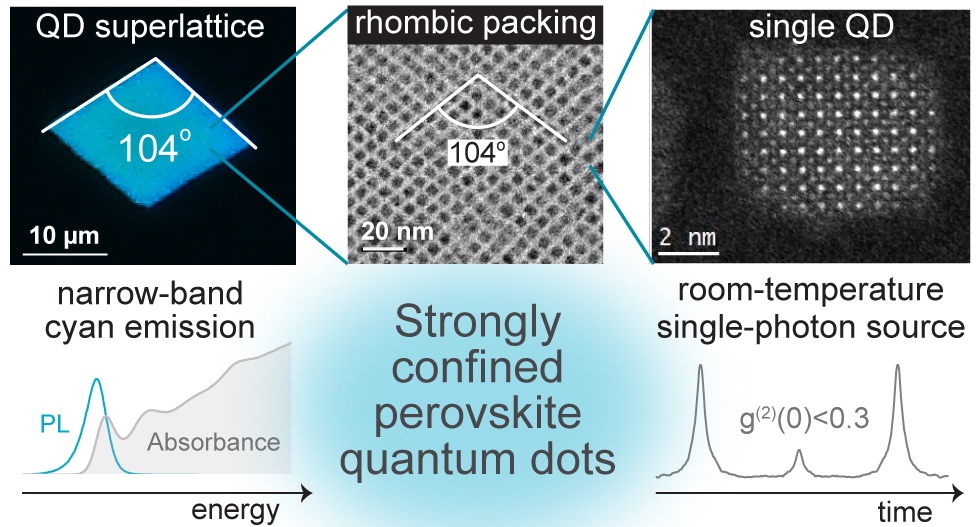How to synthesise stable and strongly confined perovskite quantum dots
|The 2023 Nobel Prize in Chemistry was awarded for the discovery and development of quantum dots (QDs) – semiconductor nanoparticles so tiny that their size, due to quantum-mechanical effects, determines their optical and electronic properties. Lead-halide perovskite QDs are the latest and increasingly important generation of QDs. However, applications of perovskite QDs in the strong confinement regime, i.e., with a size smaller than about 7 nm, are still limited due to the insufficient chemical stability and size monodispersity of such tiny QDs.

To overcome this limitation, Dr. Simon Böhme, Dr. Maryna Bodnarchuk, Prof. Maksym Kovalenko, and colleagues of the Swiss Federal Institute of Technology (ETH Zurich), devised a postsynthetic QD surface treatment employing didodecyldimethylammonium bromide (DDAB) ligand shells to 5 nm colloidal perovskite QDs. They then achieved chemically stable and strongly confined QDs, with high size monodispersity (7.5% ± 2.0%) and shape uniformity. This enabled them, in collaboration with partners across Europe, to study the structure and fundamental optical properties of these QDs using several techniques, including small-angle X-ray scattering (SAXS) available at the CERIC Austrian partner facility at Elettra Sincrotrone Trieste.
Finally, scientists discovered that these tiny QDs can, thanks to their achieved unique chemical and structural features, self-assemble into QD superlattices with exceptional long-range order, uniform thickness, and rhombic macroscopic shape. Together with the new handle of size control in the strong confinement regime, these exciting features may enable novel devices such as wavelength-tunable and solution-processable quantum light sources operating at room temperature. The future has just become even brighter and more colorful.
ORIGINAL ARTICLE:



